The Basics of T-bone Truck Accidents
In a T-bone accident, one car impacts the side of another, often at a high rate of speed. Many vehicles have less protection on the sides, which means these accidents can cause catastrophic injuries to the victims. Undoubtedly, T-bone accidents involving large commercial trucks can cause extensive property damage and severe injuries.
How Do T-bone Truck Accidents Occur?
Victims of T-bone accidents often report feeling as if the impact came out of nowhere. Most often, T-bone accidents occur at intersections, where cars are traveling perpendicular to one another. Like other car accidents, a variety of factors may contribute to T-bone truck accidents. Some common causes of T-bone truck accidents include:
Distracted driving. Distracted drivers may be unaware they are passing through an intersection or may fail to observe a traffic light change in time to stop safely. Truck drivers, unfortunately, face a high risk of distraction. Because they spend long hours behind the wheel, truck drivers may engage in more activities while driving than other drivers. Anything that takes a driver’s eyes off the road, hands off the wheel, or mind off driving is considered a driving distraction. Cell phone use typically takes a driver’s eyes off the road for around five seconds. Although a seemingly short time, trucks can travel the distance of a football field in only five seconds.
However, cell phone use is only one of many activities that cause truck driver distraction. Other common distractions include:
- Eating or drinking while driving. Eating messy food, in particular, can cause substantial distraction.
- Checking or changing the GPS. On unfamiliar roads, especially roads with heavy traffic or road work, truck drivers may be dangerously distracted by GPS devices.
- Adjusting the radio or controls within the vehicle. When drivers adjust the heating or air controls, they remove their hands from the wheel and are distracted from the road.
- Zoning out. Truck drivers, in particular, face a high risk of exhaustion, leading to driver inattention and decreased focus on the road. Zoning out can cause a driver to lose track of time or fail to realize potential hazards. A driver who is tired and zoning out may be unaware of other vehicles in an intersection or that they are passing through an intersection at all.
Driver inebriation. Inebriated drivers may fail to properly navigate challenges on the road, including intersections. Impaired driving causes slowed reaction times. Inebriated truck drivers may fail to notice a changing light and struggle to stop in time. In general, impaired drivers may struggle to maneuver their vehicles safely or maintain their traffic lane. Inebriated drivers cause around 28 percent of traffic deaths across the United States each year.
Brake failure. Due to the sheer size and weight of semi trucks, they require significantly more time and distance to stop than passenger vehicles. If the brakes fail, the truck driver may have little recourse for stopping the vehicle. Often, truck drivers may not recognize a problem with the brakes until it’s too late.
Speeding. Truck drivers often struggle to meet tight deadlines due to limitations on the hours they are permitted to drive in a single day. Many truck drivers get paid by the mile, which may increase their inclination to speed to increase their pay. When traveling at excessive speeds, large commercial trucks become especially difficult to maneuver. Drivers may struggle to safely bring the vehicle to a stop, particularly when that stop is unanticipated. Excessive speeds may make it difficult for truck drivers to stop in time to avoid a T-bone accident.
Drowsiness. Driving while fatigued can cause impairment that is similar to driving under the influence of alcohol or drugs. As such, drowsy truck drivers can pose just as much of a hazard on the road as inebriated drivers. Drowsy drivers cannot maintain focus on the road or control of their vehicles. If a driver falls asleep behind the wheel, they may plow through an intersection without ever attempting to stop. If the truck strikes another vehicle that is properly passing through the intersection, the collision will likely cause extensive property damage and serious injuries.
Blind spot accidents. Truck drivers often have large blind spots making it difficult for them to see vehicles in front, behind and beside them. In addition, they often have to make wide turns. Unfortunately, failure to note the presence of a vehicle in a trucker’s blind spot can increase the risk of accidents. For example, wide left turns often result in T-bone collisions with smaller vehicles hidden in their blind spots.
Poor weather conditions. In poor weather conditions, big trucks require more time and distance to bring their vehicle safely to a stop. Both rain and snow can increase the risks of an accident for a large commercial truck. When a truck’s wheels fail to gain enough traction, it can make it impossible for the driver to come to a complete stop. Poor weather conditions coupled with speeding or other traffic law violations only increases the chances of an accident.
Failure to yield the right-of-way.When approaching an intersection, a big truck has no more rights than any other vehicle on the roadway. Some truck drivers, however, may fail to yield the right-of-way to other drivers, which can result in severe accidents.
Impaired visibility. While heavy fog, rain, and snow can all substantially decrease visibility, so can blind turns, intersections, and other vehicles on the road. Impaired visibility can make it difficult for truck drivers to see others in an intersection. Smaller vehicles may be even more difficult for truck drivers to observe.
Seven Ways to Decrease Your Risk of T-bone Collisions
When you drive a standard passenger vehicle, a T-bone accident with a big truck can cause catastrophic property damage and injuries.
While you cannot reduce your risk of accidents entirely, you can take several steps to help reduce the chances of being involved in a serious accident.
– Make sure you have plenty of time to reach your destination whenever you get behind the wheel. Driving on a tight timeline not only increases your stress, it can encourage drivers to speed or engage in other unsafe driving behaviors. Although not always practical, if possible allow plenty of time to arrive at your destination to significantly increase your chances of arriving safely.
– Take a second look before moving through an intersection, especially if you notice the presence of big trucks. Try to avoid flying through an intersection the moment the light changes. Instead, check to make sure the intersection has no vehicles moving towards it before you move your vehicle forward. An extra second can provide the time you need to avoid an accident.
– Pay careful attention to the presence of big trucks around you. Commercial truck drivers often bear liability for accidents caused by their negligent or reckless behavior behind the wheel. Safely navigating around big trucks, however, requires care from everyone on the road. When you share the road with big trucks, carefully note their position. Try to stay out of the truck’s blind spot. Avoid entering into a truck’s blind spot while the vehicle is attempting a turn. When necessary, wait for the truck to complete its maneuver before passing alongside the truck.
– Avoid distractions at intersections. Ignore the urge to check your cell phone or to quickly adjust controls inside the vehicle at an intersection. Instead, pay attention to the other vehicles entering the intersection. While passing through an intersection, a simple distraction can result in a serious collision.
– Come to a complete stop at stop signs and red lights. Do not engage in a rolling stop, where you only slow your vehicle rather than a complete stop before proceeding through an intersection. Instead, stop completely and ensure the intersection is clear before proceeding forward.
– Avoid speeding. When you speed, it changes your rate of movement in comparison to other vehicles around you. As a result, it can make it difficult for other drivers, to judge your rate of speed. Instead, maintain a safe rate of speed by staying at relatively the same speed as other vehicles on the road.
– Exercise particular care when inclement weather conditions impair visibility. Slow down and observe the actions of other vehicles before proceeding through an intersection. If it will increase the visibility of your vehicle, turn on your headlights. A little care can go a long way toward reducing the risk of accidents with serious injuries.
Four Steps to Take After a T-bone Collision
After a T-bone collision, you and other passengers in the vehicle may suffer severe injuries. The passengers occupying the side of the vehicle that sustains the impact are particularly at risk. Nonetheless, every passenger in the vehicle involved in a T-bone collision with a commercial truck is at high risk of injury.
Avoid any actions at the scene of the accident that could worsen your injuries or place you in additional danger. You may need to remain in your vehicle until emergency personnel arrive to help care for your injuries. If you are able, take photos of the accident scene, your injuries, and the damage to the vehicles. Photos from the scene may serve as valuable evidence should you decide to pursue legal action later. Of course, you should always prioritize your health and wellbeing following an accident. Even if you feel that you only sustained minor injuries, always seek an evaluation from a medical professional.
Do not leave the scene of a T-bone collision unless you must seek necessary medical care or call the police. If you feel it is dangerous to remain at the scene, drive to safety and immediately contact law enforcement.
Step One: Seek Medical Care
Even if you believe you suffered relatively minor injuries in a T-bone collision, you should seek an evaluation from a qualified medical professional. A doctor can help identify injuries you may not have noticed at the time of the accident. Some victims with severe internal trauma may not notice the full extent of their injuries immediately. Other victims with broken bones, chest contusions, or soft tissue damage may not be aware of the full extent of their injuries. Immediate medical care can also help provide valuable documentation of your physical condition immediately following the accident. Medical records may serve as evidence should you decide to pursue a personal injury claim later.
Follow all instructions and recommendations given by the medical professionals providing your treatment. If you require ambulance transportation from the scene, the EMTs may request that you lie still or allow them to strap you onto a backboard. The emergency room physicians may provide an extensive list of instructions for your recovery, including symptoms to watch for in the days following the accident.
Step Two: Contact Your Insurance Company
You may need to remove a totaled vehicle from your insurance policy or register a new vehicle following your T-bone accident. Your insurance company may also provide valuable assistance as you seek compensation for the repair or replacement of your vehicle.
Step Three: Contact an Attorney

Ideally, after experiencing a T-bone truck accident, you should contact an attorney as soon as you are able. While you may need to wait until your recovery has progressed before finalizing your claim, contacting an attorney early may provide you with valuable assistance. When appropriate, an attorney may help injured victims collect critical evidence.
Depending on the unique circumstances of your case, you may need to access the truck driver’s log book or obtain footage from traffic cameras. Experienced attorneys regularly collect critical evidence to strengthen an injured victim’s personal injury claims. Not only do they know what to look for, they also know how to easily access it.
You should always consult with an attorney before accepting any settlement offer from the truck driver’s insurance company. Insurance companies often attempt to provide a low settlement offer to decrease the company’s financial obligation. After evaluating the unique facts of your case, an attorney may give you a realistic idea of the amount of compensation you should expect.
Step Four: Keep Track of Medical Records and Expenses
Because T-bone accidents often result in such serious injuries, you may have significant medical costs. In some cases, you may receive multiple bills for a single procedure. Keep track of all medical expenses related to the accident. Medical expenses may include home modifications that you require to maintain independence or mobility after your accident. Any rehabilitation recommended by your physician should also be tracked, including any physical, occupational, or psychological therapy. By keeping track of these expenses, you will make it easier to total your medical expenses as you evaluate your claim.
If you suffer injuries in a T-bone collision with a truck, you may need an attorney to help file your claim or determine the compensation you may be entitled to. Contact an experienced car accident attorney as soon after your accident as possible.
Boohoff Law
2200 6th Avenue, Suite 768
Seattle, WA 98121
(877) 999-9999
Free Consultation
We Are Here For You 24/7
Reviews
– Elissa M.
“Really pleased with Boohoff Law! Received immediate responses when I had any questions. Treated amazingly by all staff … made this process a true breeze!”
– Caitlyn M.
– Brandy K.
Related Posts
I Was Partially At-Fault in a Rear-End Crash. Can I Still Get Compensation in Florida?
I Was a Passenger in an Uber Accident. What Are My Rights?
What Damages Can I Recover After a Jackknife Truck Accident?
Recovery is personal.
We’re here for you.
We’re close by. And if you can’t make it to us, we’ll meet you where you need us, at home or in the hospital.
You're better off with Boohoff.
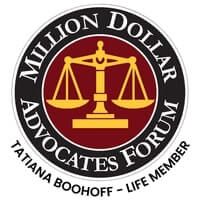

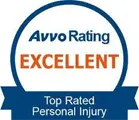
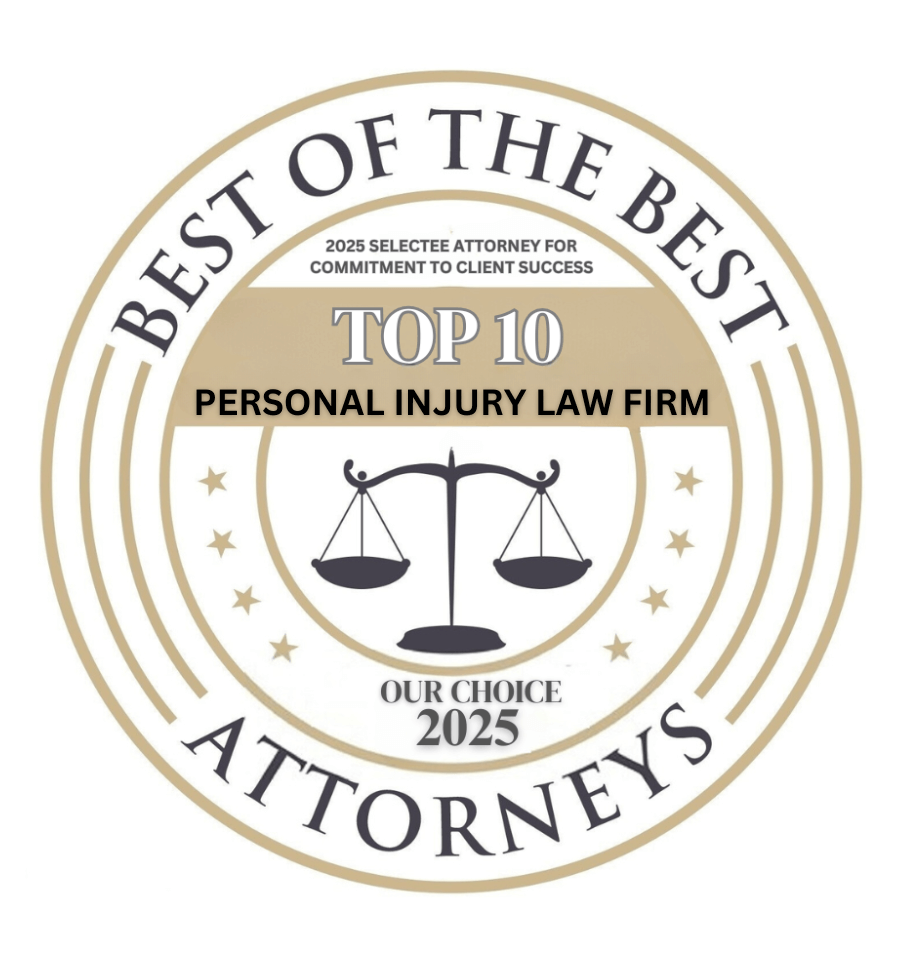
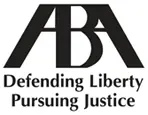
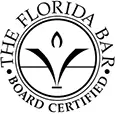
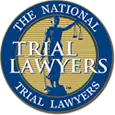

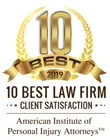

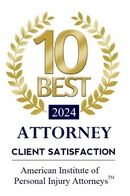
The information on this website is for general information purposes only. Nothing on this site should be taken as legal advice for any individual case or situation. This information is not intended to create, and receipt or viewing does not constitute, an attorney-client relationship.
available 24/7
(877) 999-9999
